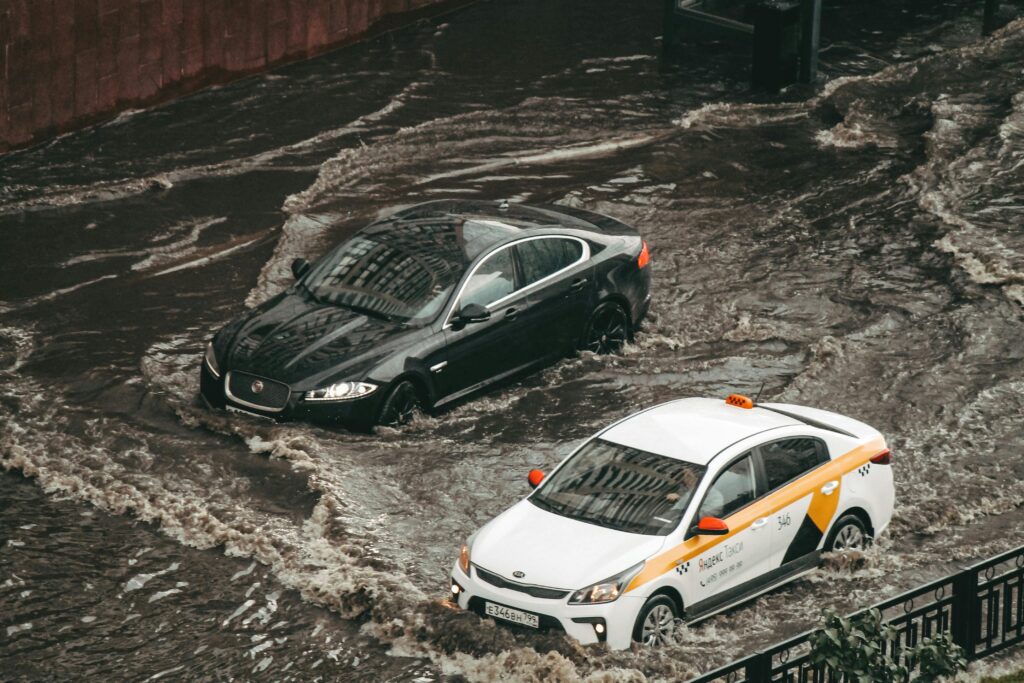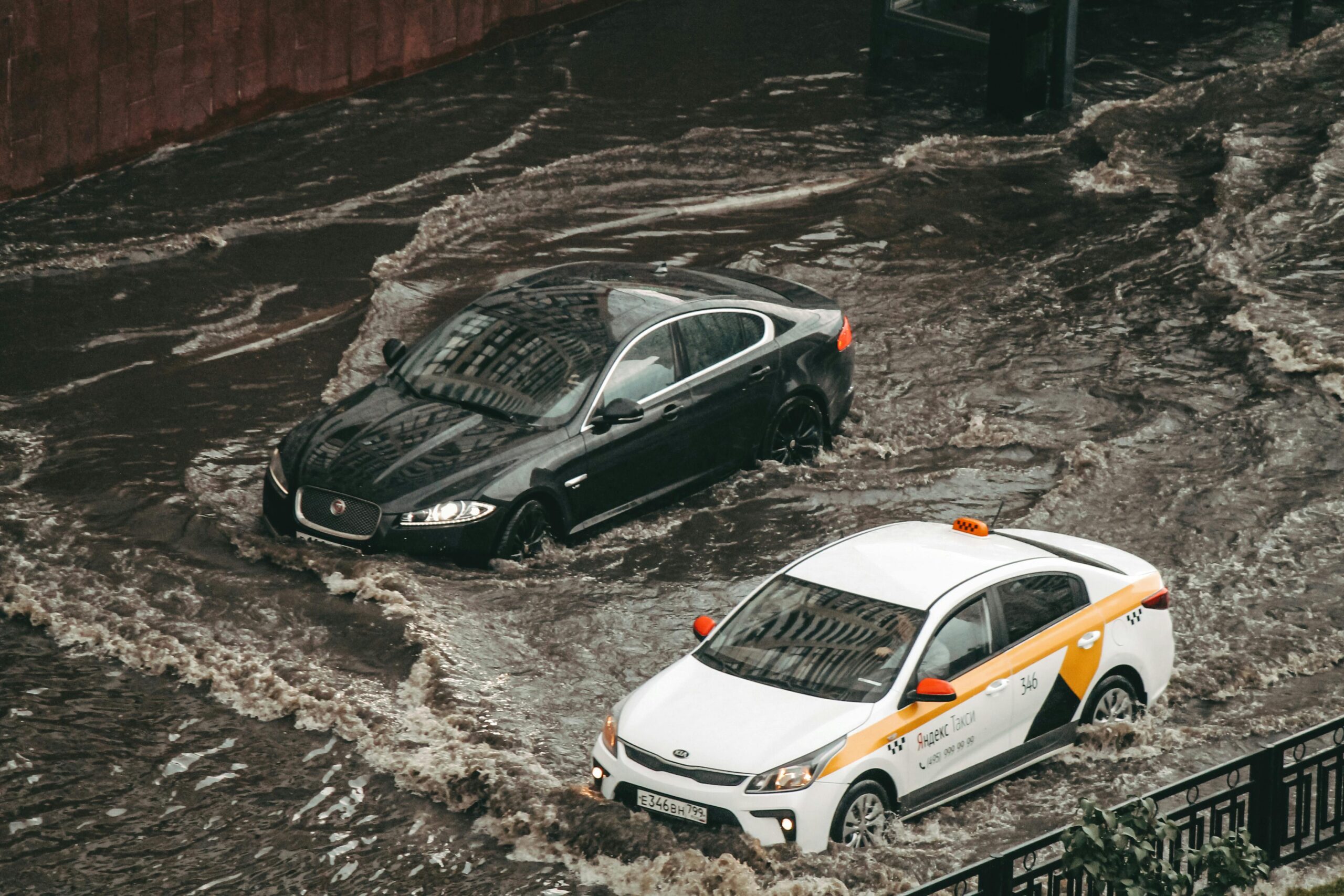Spotting a Flood-Damaged Car Before You Buy

Finding a great deal on a used car can feel like striking gold, especially when you’re a gearhead looking for your next project or daily driver. But as tempting as a low price might be, it’s crucial to know what you’re getting into. Following major storms and floods, a wave of water-damaged vehicles often quietly enters the used car market, and these cars can hide a world of problems beneath a shiny exterior.
These vehicles, often called “flood cars,” are sold by sellers who may not disclose the car’s soggy history. While a car might look perfectly fine after a thorough cleaning, the long-term effects of water exposure can be devastating. We’re talking about rusted frames, fried electronics, and moldy interiors that can lead to endless headaches and costly repairs. For any car lover, buying a flood-damaged car unknowingly is a nightmare scenario. This guide will walk you through the essential checks you need to perform to protect yourself and ensure your next four-wheeled purchase is a dream, not a disaster.
Start with the Paperwork
Before you even pop the hood or sniff the interior, your first line of defense is the vehicle’s history report and title. This is a simple but critical step that can save you a ton of time.
- Vehicle History Report: Services like CarFax or AutoCheck are your best friends here. A comprehensive report will pull data from insurance companies, state DMVs, and repair shops. It will often flag a car that has been reported as flood-damaged. Look for specific terms like “flood damage,” “salvage title,” or “water damage” in the report. A clean report isn’t a 100% guarantee, but a flagged one is a definite red flag.
- Check the Title: The car’s title is another piece of the puzzle. Some states issue “flood titles” or “salvage titles” to indicate that a vehicle has sustained significant damage. If a seller is hesitant to show you the title or if it has any of these brands, you should be extremely cautious. Be aware that some dishonest sellers might “wash” a title by registering the car in a different state with more lenient regulations, which can remove the flood brand. This is why a history report is so important, as it can often track the car’s registration history across state lines.
If the paperwork looks clean, it’s time to get your hands dirty and perform a thorough physical inspection.
Use Your Senses: The Sniff and Feel Test
Your nose is one of the most powerful tools you have when inspecting a used car. Water damage leaves behind a distinct, musty odor that is incredibly difficult to eliminate completely.
- The Smell Test: Get inside the car, close all the doors and windows, and just take a deep breath. Do you smell mildew, mold, or a general damp, earthy scent? This is a huge warning sign. Also, be suspicious of an overwhelming amount of air freshener or disinfectant. While some people just like their car to smell nice, an excessive, heavy scent could be an attempt to cover up something unpleasant. Run the air conditioning and the heater. If either system pushes out a musty smell, it’s another sign that moisture has gotten into the ventilation system.
- The Feel Test: Moisture can linger for a long time. Feel the carpets in the main cabin and, most importantly, in the trunk. Pull back a corner of the carpet if you can and feel the padding underneath. Is it damp or does it feel like it has been wet before? Check under the spare tire in the trunk, as this is a common spot for water to pool and sit. Don’t forget to check the upholstery. Press down firmly on the seats to see if any moisture comes to the surface or if they feel unusually stiff.
The Visual Inspection: Look for Telltale Signs
A detailed visual inspection can reveal a lot about a car’s past. You’re looking for signs of water where it shouldn’t be and the rust and corrosion it leaves behind.
- Look for Water Lines and Silt: Floodwater is dirty. It carries mud, silt, and debris that gets into every nook and cranny of a car. Open the doors and check the door panels and speaker grilles for any fine, sandy residue. Use a flashlight to inspect hard-to-reach areas, like under the dashboard, inside the glove box, and in the crevices around the center console. You might even find a faint water line on the engine block or inside the door jambs, indicating how high the water level reached.
- Inspect for Rust and Corrosion: Modern cars are built with good rust protection, but nothing is designed to be submerged in water for an extended period. Pay close attention to metal components that are typically unpainted. Look for rust on screw heads inside the cabin, under the dashboard, and on the seat mounting brackets. Check the pedals and the metal tracks the seats slide on. These areas are often overlooked during a cleanup. Pop the hood and examine the engine bay. Is there premature rust on bolts, brackets, or other metal parts? Also, get down and look underneath the car. A brand-new exhaust system on an older car could be a sign that the original was rusted out, but excessive rust on the frame, suspension components, or brake lines is a major concern.
- Upholstery and Carpet Clues: Look for mismatched or brand-new carpeting and upholstery in an older car. Replacing the interior is a common way to hide flood damage. Does the carpet fit poorly? Are the colors slightly off from the rest of the interior trim? Sometimes, you might see water stains or discoloration high up on the fabric of the door panels.
The Electrical System: A Flood Car’s Biggest Weakness
Water and electricity do not mix. This is where flood-damaged cars often have the most severe and unpredictable problems. Modern vehicles are packed with complex electronics—ECUs, sensors, wiring harnesses, and entertainment systems—and water can wreak havoc on all of them.
- Test Everything: Go through the car and test every single electrical component. Don’t rush this part. Check the headlights (high and low beams), taillights, and turn signals. Test the interior dome lights, dashboard lights, and instrument panel. Do any of them flicker or seem dim?
- Power Features: Run the power windows up and down multiple times. Test the power locks, power seats, and power mirrors. Turn on the radio and test all the speakers. If it has a navigation or infotainment screen, play around with its functions.
- Warning Lights: When you first turn the key to the “on” position (without starting the engine), all the dashboard warning lights should illuminate briefly and then turn off. If any lights stay on, or if some don’t light up at all, it could indicate a problem. Be especially wary if the airbag (SRS) light stays on, as water can damage the sensitive crash sensors.
Electrical problems from water damage are often intermittent and can appear weeks or months after you’ve purchased the car. Corrosion can slowly build up on connectors and wires, leading to failures down the road. This is why a thorough test is essential.
When in Doubt, Get a Professional Opinion
Even if you’re a seasoned car enthusiast, it’s easy to miss something. If you have any suspicions about a car, or even if you just want peace of mind, it is always worth the money to have a pre-purchase inspection (PPI) done by a trusted, independent mechanic.
Explain your concerns to the mechanic and ask them to specifically look for signs of flood damage. A good technician will know exactly where to look. They can put the car on a lift for a much better view of the undercarriage and can check for hidden rust and debris. They may also be able to check the engine and transmission fluid for water contamination—a milky, frothy appearance in the oil or fluid is a dead giveaway.
Spending a hundred dollars or so on a professional inspection could save you thousands in repairs and the stress of owning a problematic vehicle. If the seller objects to you taking the car for an inspection, walk away. A transparent seller with nothing to hide will have no problem with it.
Protecting yourself from buying a flood-damaged car comes down to being patient, thorough, and a little skeptical. By carefully checking the paperwork, using your senses, and performing a detailed inspection of the car’s body, interior, and electrical systems, you can spot the warning signs and avoid a costly mistake. And when you finally find that perfect, dry, and reliable car, you’ll be able to enjoy it with confidence.

